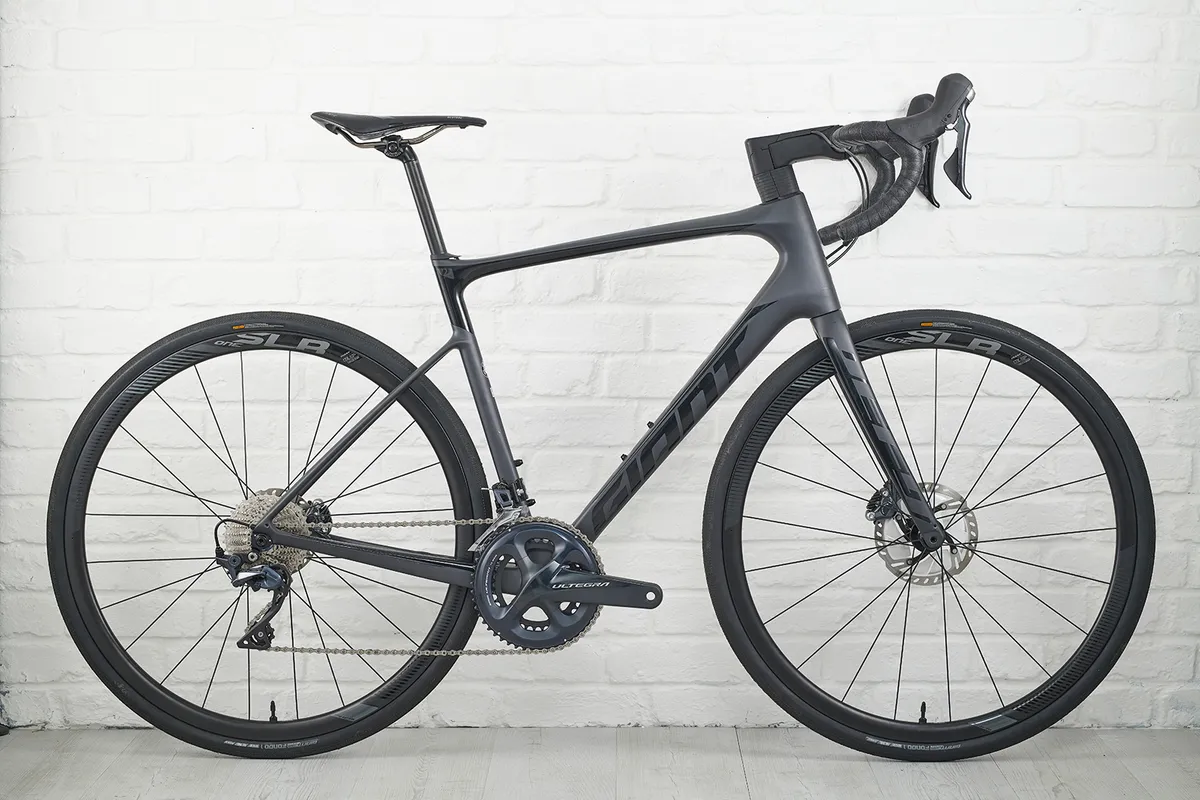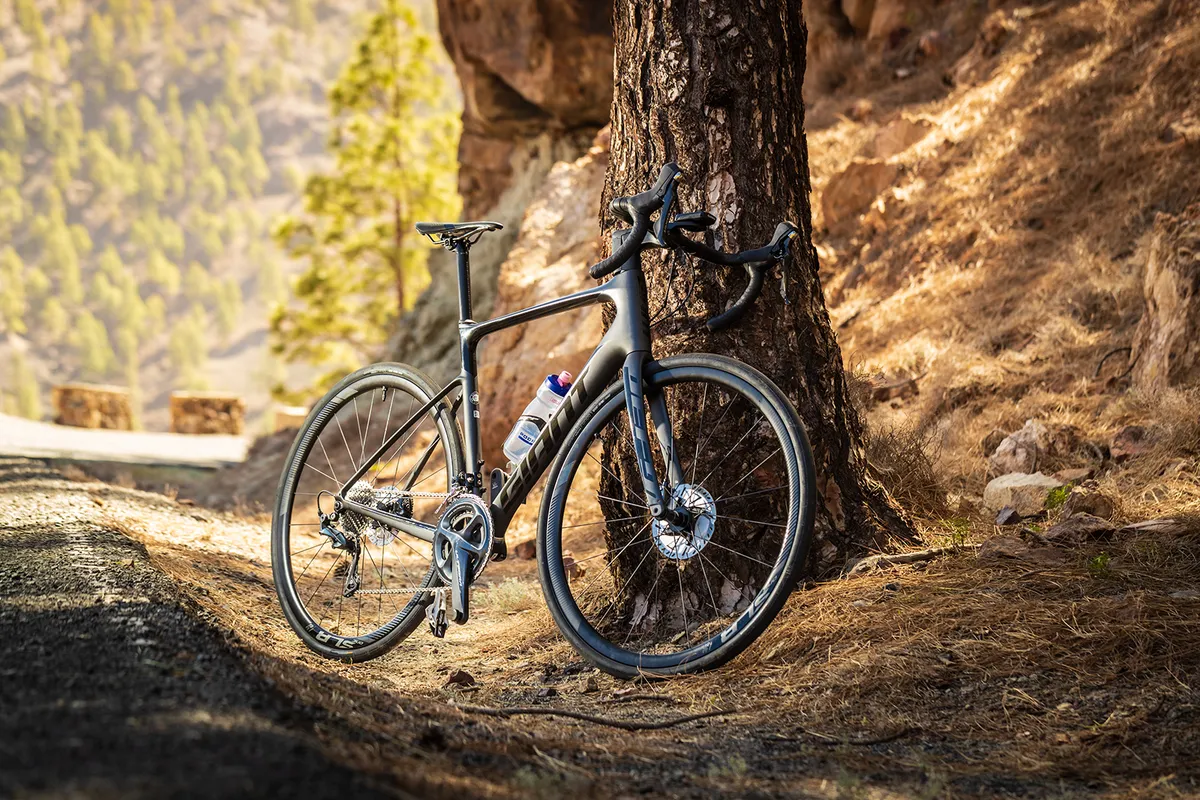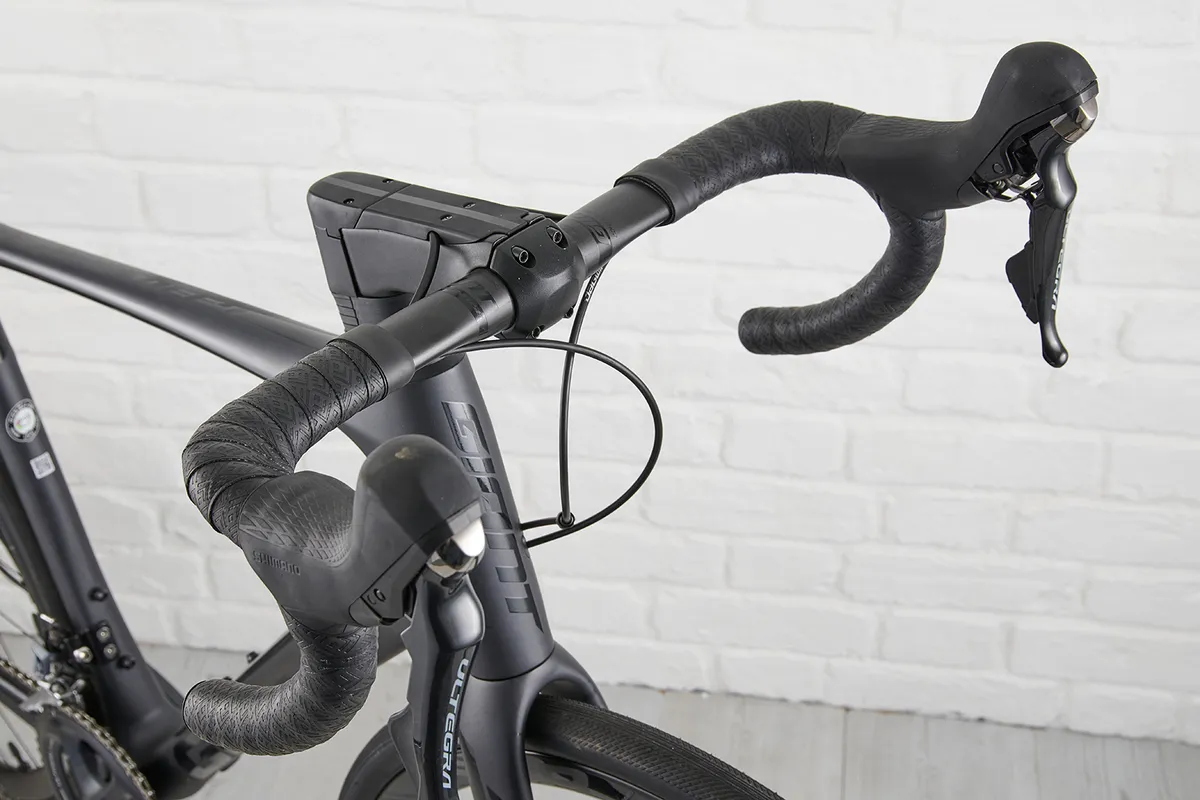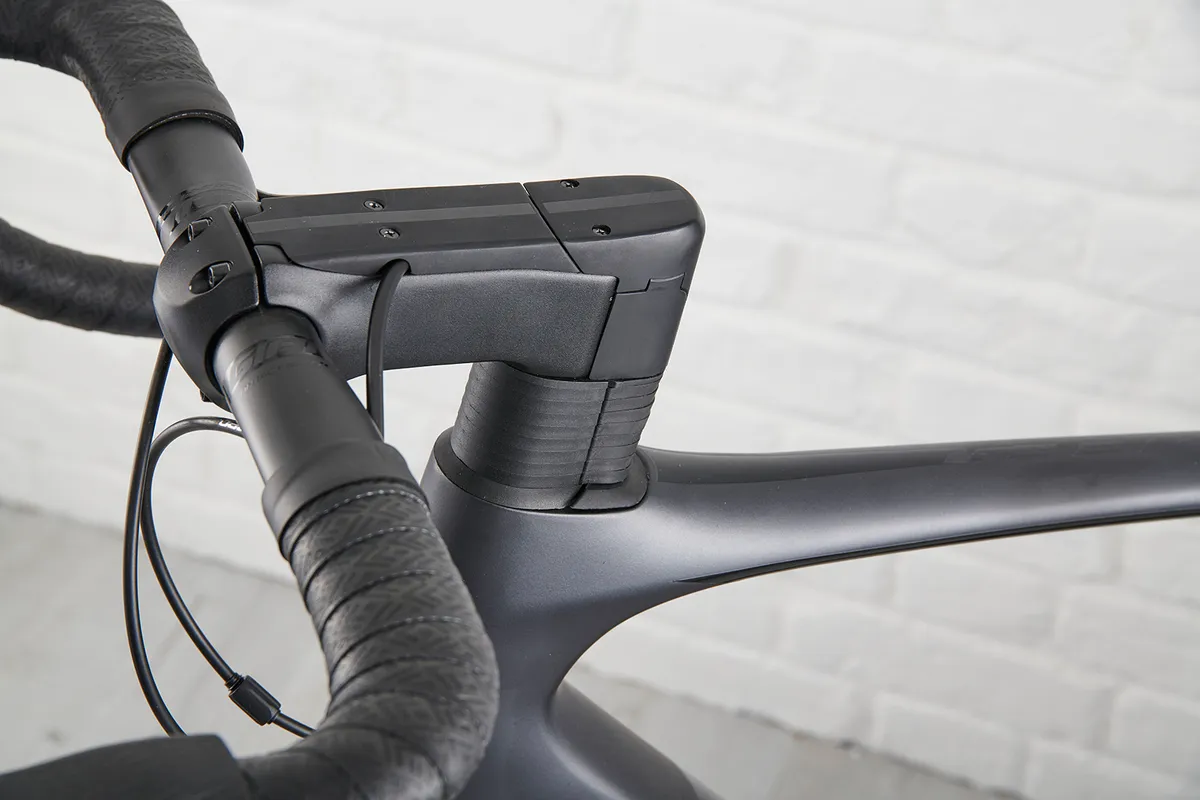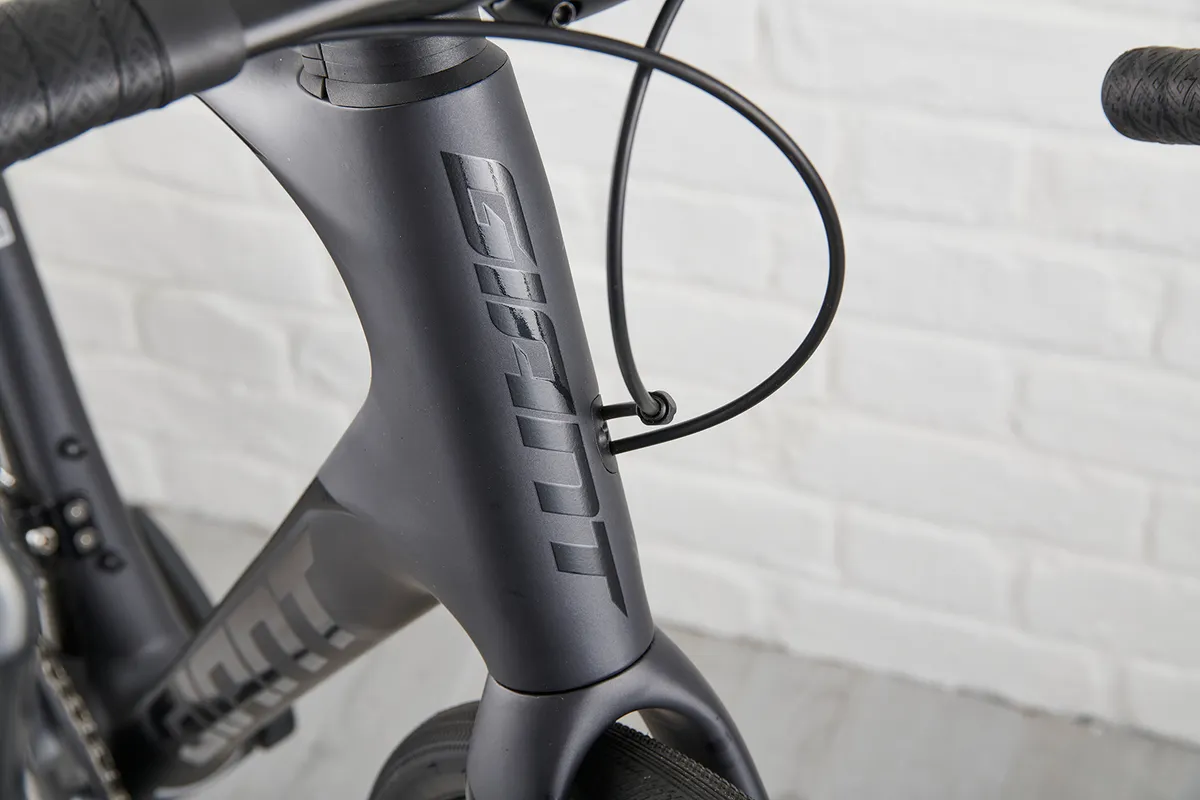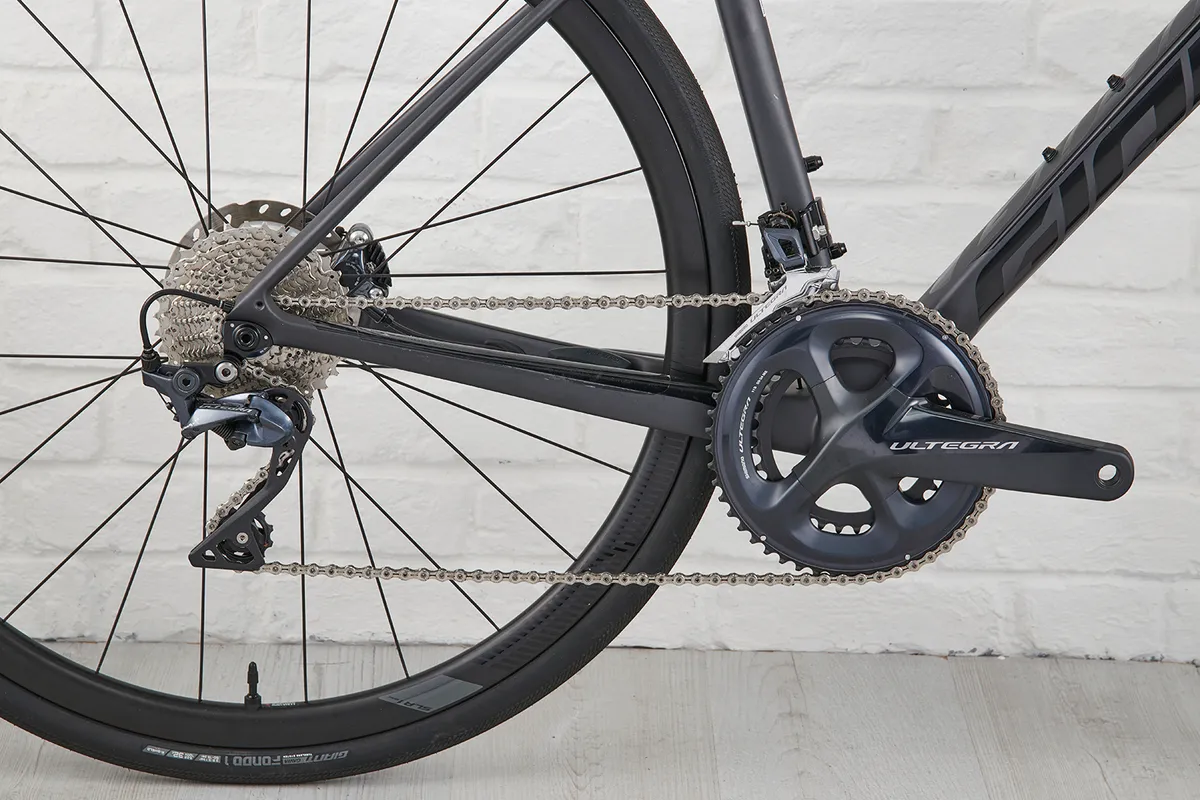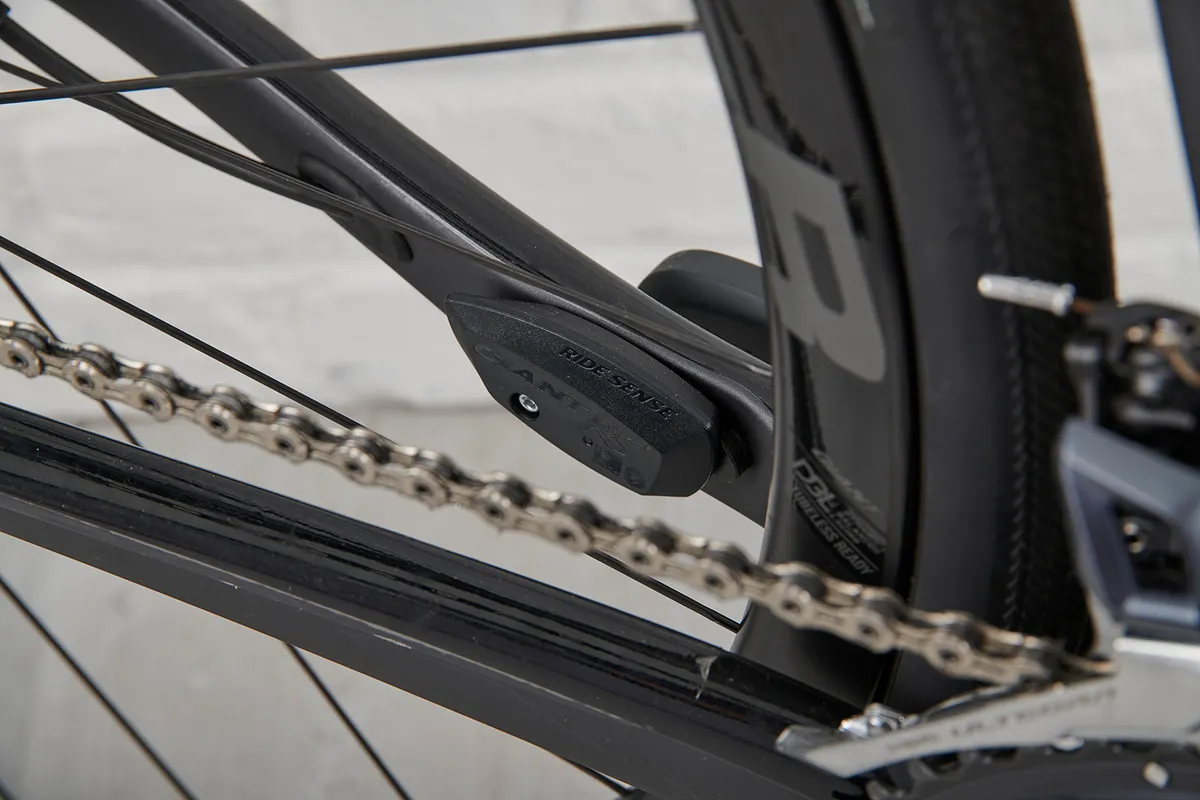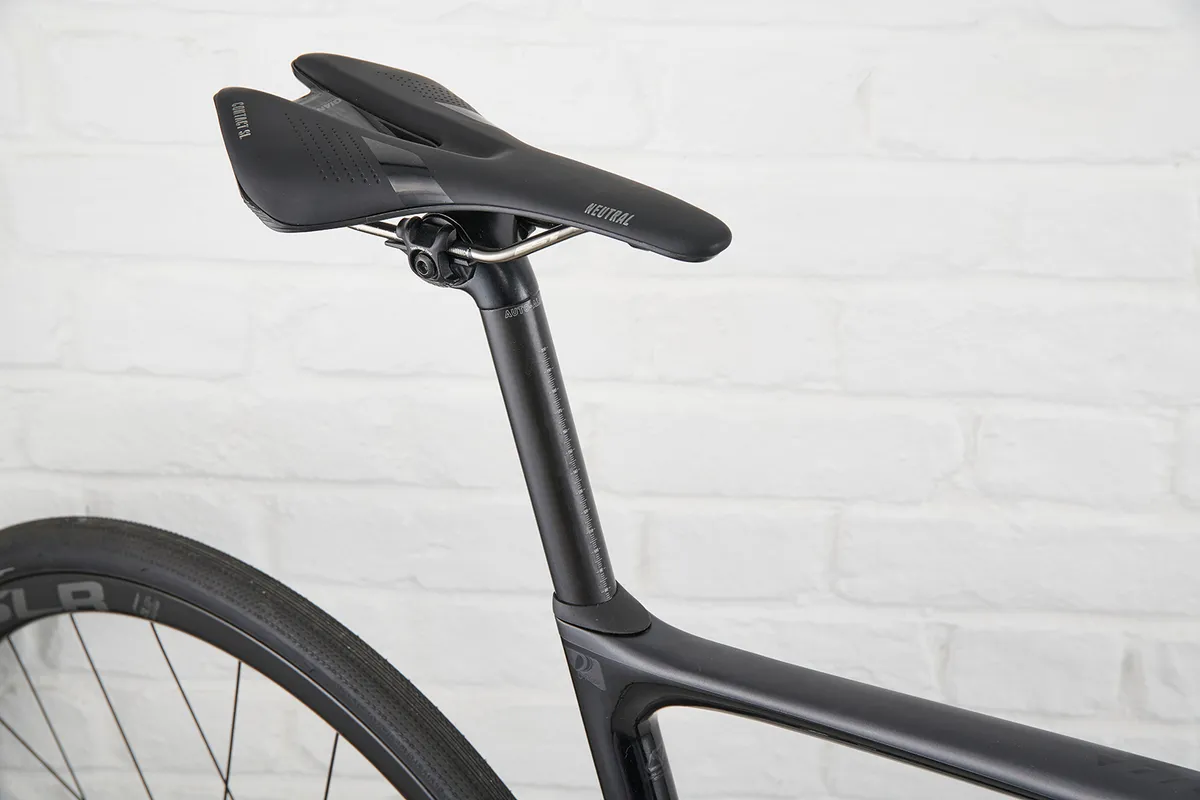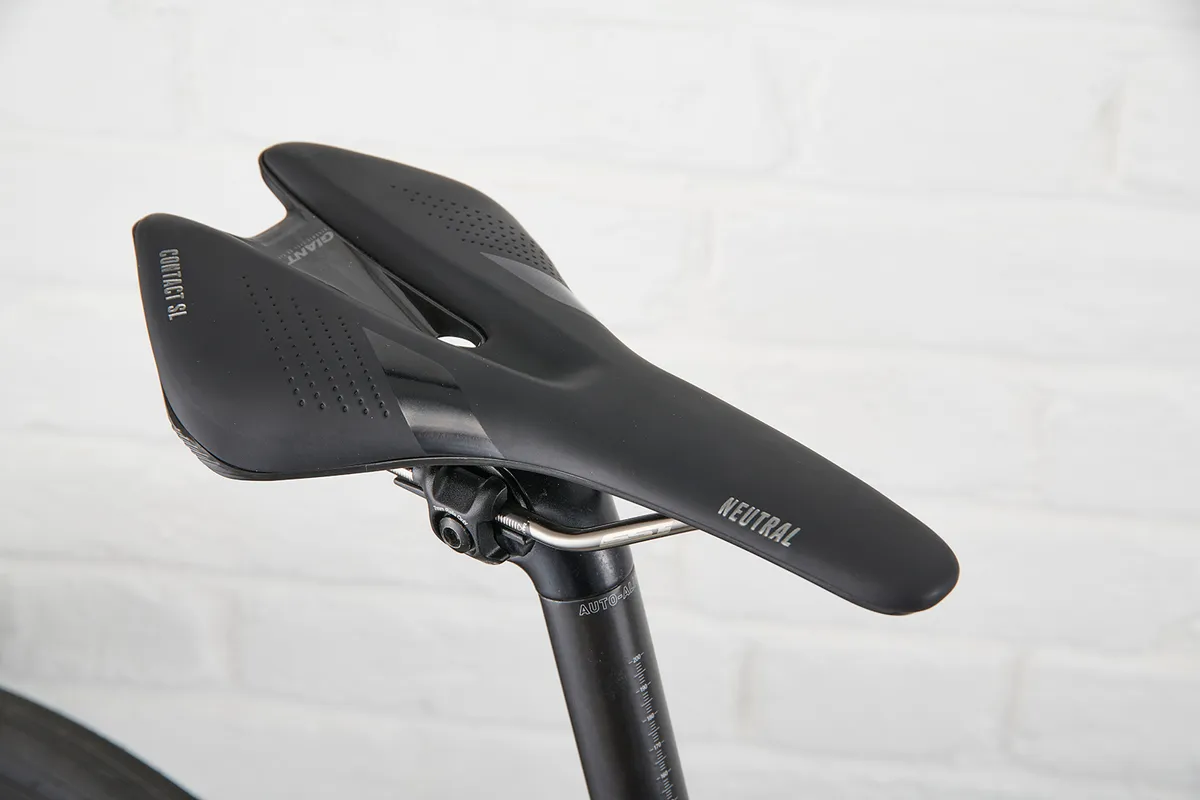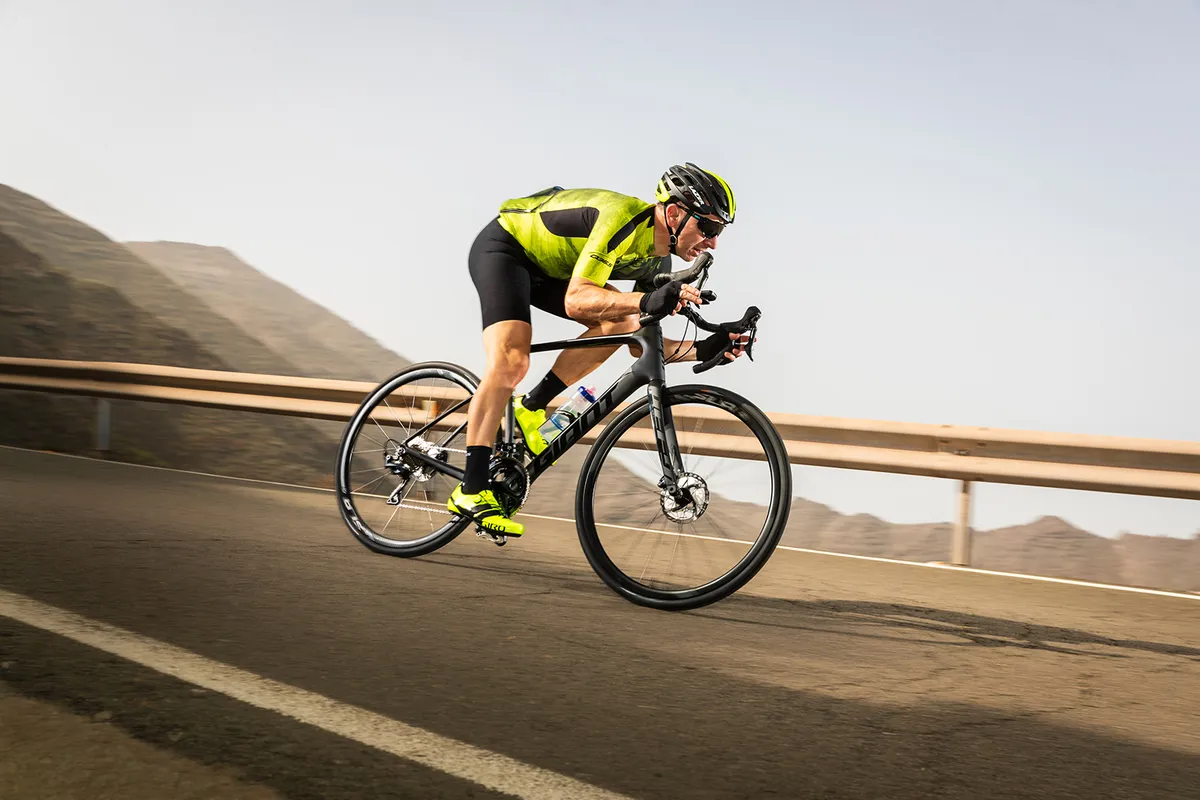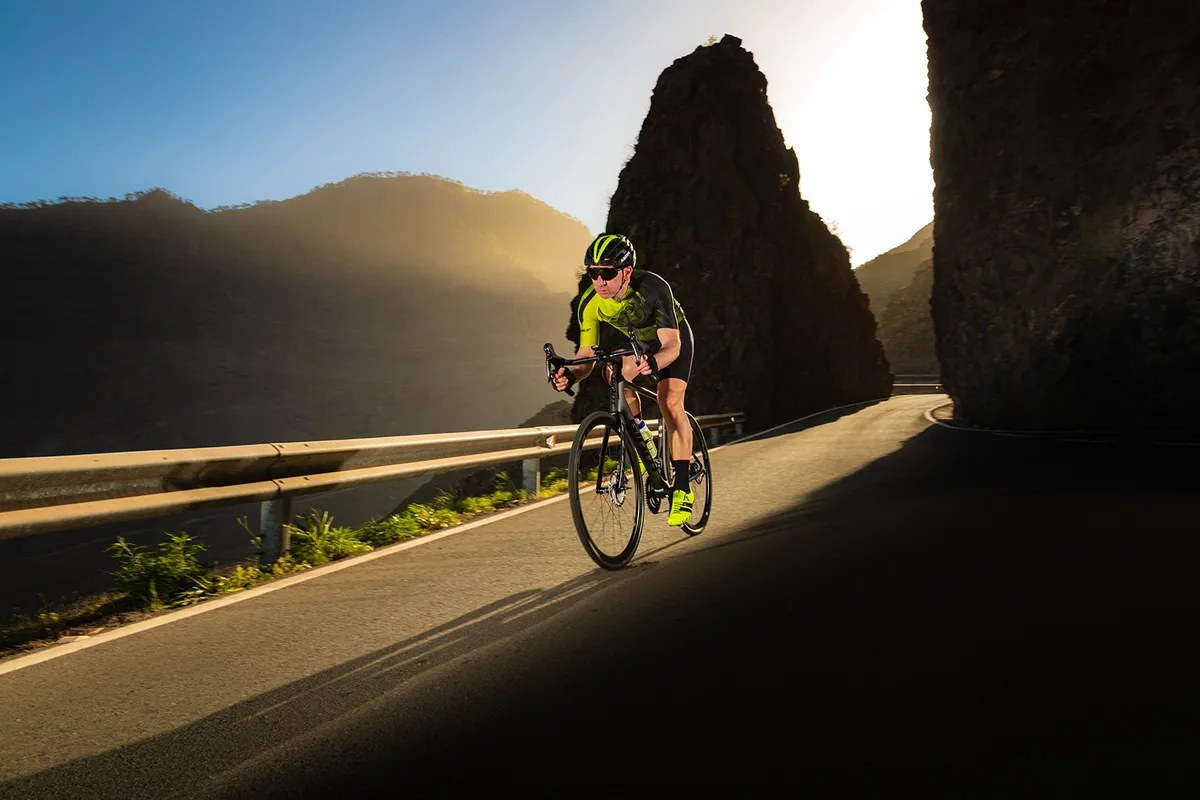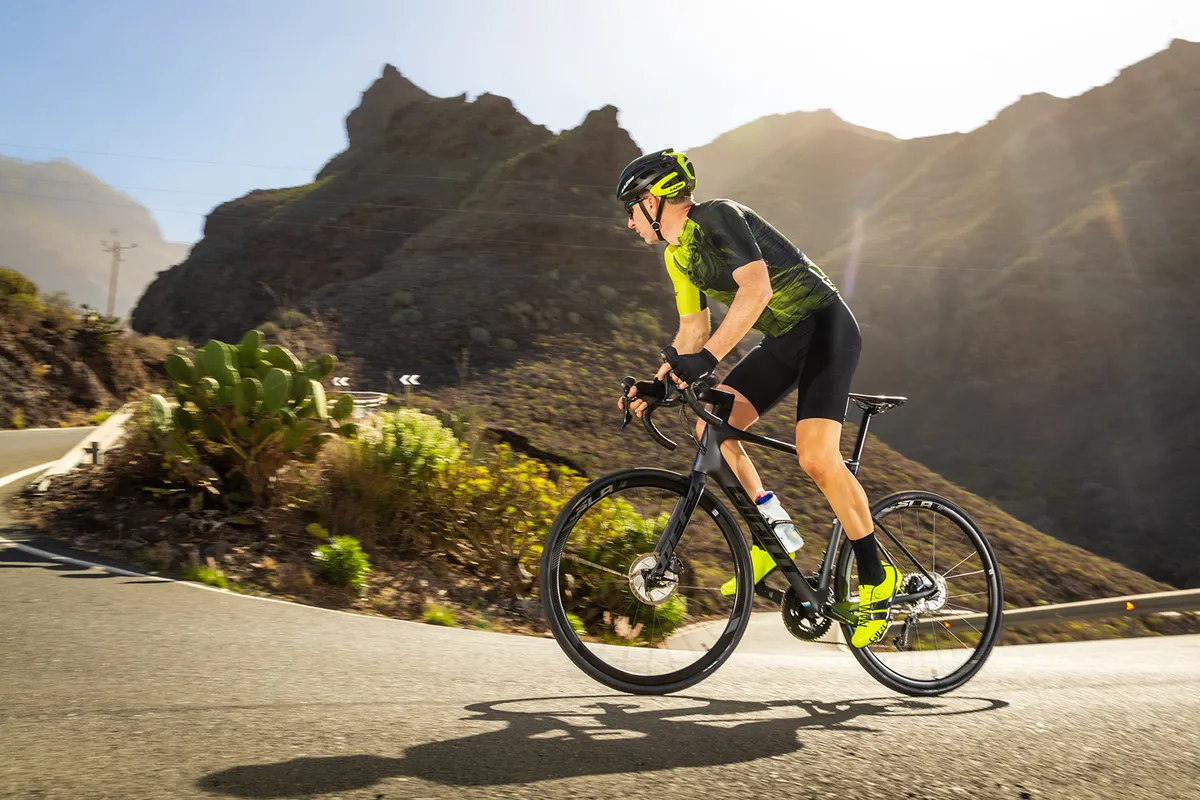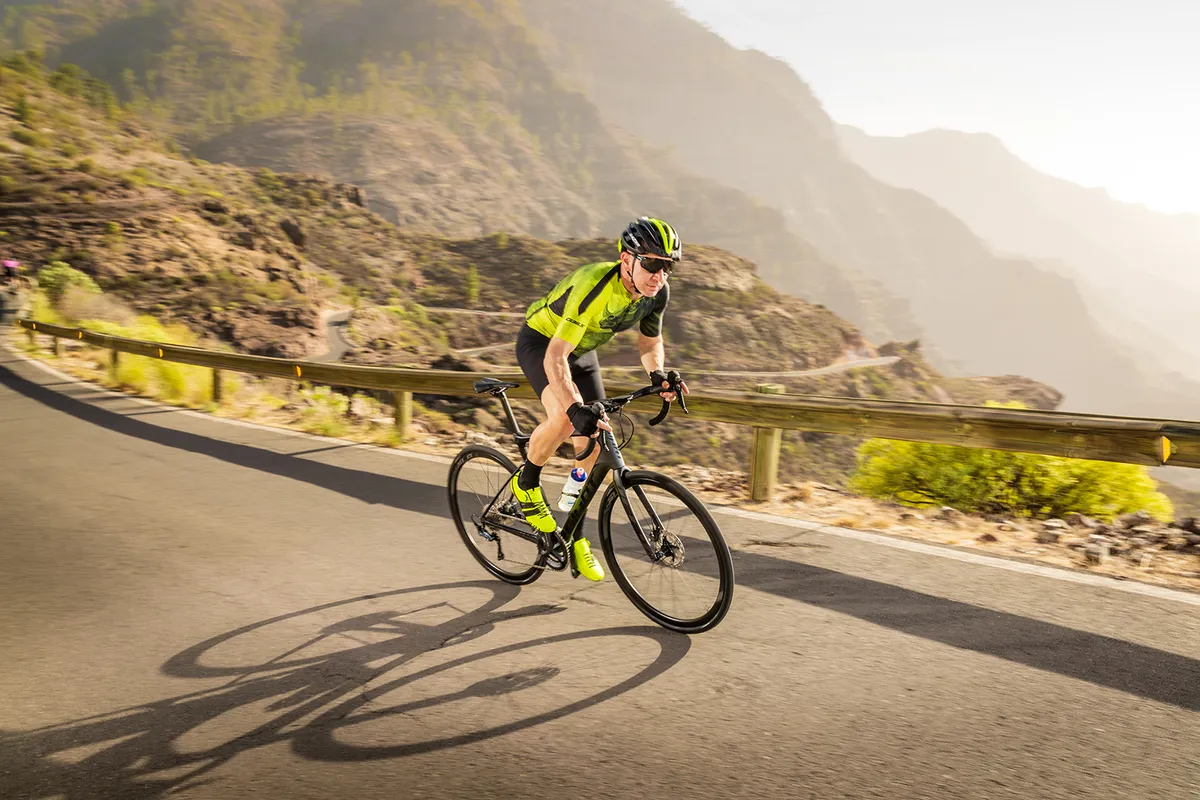The Defy defined a genre. It took the best elements of Giant’s racing TCR and combined them into a ride position that’s not at pro-level extremes of long and low, and has a reputation for its vibration-neutralising abilities.
Well, with this latest version, it has elevated that to a new ‘low’, thanks to dampening bars and seatpost, as well as carbon wheels complete with tubeless tyres as standard. This is a true modern endurance road bike.
- Road Bike of the Year winner | Cannondale SuperSix EVO Carbon Disc Ultegra review
- How we tested Bike of the Year
The Defy comes with some very clever bits of design and execution in the form of Giant’s D-Fuse concept. The D-shaped seatpost debuted on Giant’s TCX and the Defy adopts something similar.
The D-shape of the tube maintains lateral rigidity but allows the post to move enough to smooth vibrations from poor road surfaces.
Smarter still, Giant’s integrated the technology into the handlebar. This is a tricky proposition because you don’t want bars that flex all the time.
Here the D-shape is orientated so that it has compliance when there’s force coming from above, such as when you hit a pothole, rut or bump (it claims 10 per cent more compliance than its own Contact SLR bar).
But when you pull on the bars when sprinting they are claimed to be 30 per cent stiffer than a standard bar.
The Defy also features Giant’s semi-integrated stem, the SL Stealth, its own saddle, wheels designed in conjunction with DT and 32c Gavia Fondo tubeless tyres.
It all comes together beautifully, the matt-black finish giving the Defy a premium aesthetic. Its visual and aerodynamic credentials are lifted further by the neat brake-hose routing, weaving its way through the Stealth stem.
Bike of the Year 2020
The Giant Defy Advanced Pro 2 is part of our annual Bike of the Year test and our Endurance Road Bike of the Year winner.
Head to our Bike of the Year hub for the full list of winners, categories and shortlisted bikes, as well as the latest reviews – or read our behind-the-scenes feature on how we tested Bike of the Year 2020.
The brake hose routing is neatly executed through the Stealth stem and adds a clean look to the front end, although the gear cables run externally from the bar into a port on the head tube.
There are a lot of smart details with the integrated speed/cadence sensor in the rear non-driveside chainstay providing accurate data, plus hidden mudguard mounts front and rear.
On the road, the Defy is gloriously composed with a wonderful ride quality. The ride position afforded by the 605mm stack and 390mm reach errs on the sporty side of sportive bikes.
Over rough surfaces the D-Fuse post and bar work harmoniously with added smoothness afforded by the new 32c Gavia tyres.
I ventured onto a few gravel road sections when testing and the Defy excelled here as well as it did on tarmac roads.
When climbing, the Defy has plenty in its armoury.
First up is the carbon wheelset: though the Defy isn’t the lightest bike out there, at 8.52kg in a size large, you still enjoy a rewarding flighty feel, with a wheel package that’s 1,500g the pair, plus tyres that run without inner tubes.
It gives the Defy an eagerness when climbing. Great real-world gearing of a 50/34 chainset and wide 11-34 cassette with a low one-to-one 34/34 gear meant I went looking for the steepest sections on local climbs to see how the Defy (and I) held up.
Having gearing this low meant I could ascend high double-digit gradients in adverse conditions, with the all-weather grip of the Gavia tyres aiding progress.
The only small niggle I have is the saddle. The Contact SL Neutral has a fairly flat profile and while the relief channel is welcome, my personal preference is for a more supportive design, such as Specialized’s Power or perhaps something a little curvier like Fizik’s Aliante.
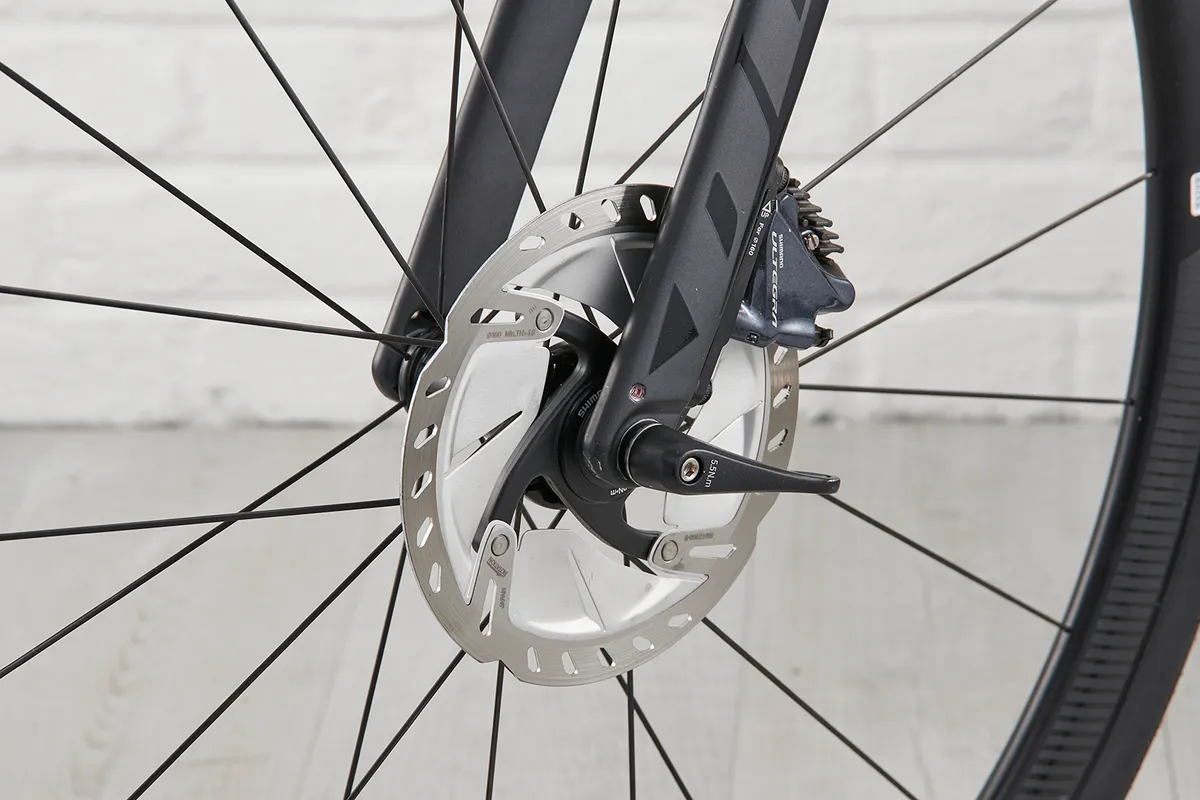
When the road turns downwards, the Defy’s Ultegra disc brakes come to the fore. My criticism of the 2019 models was that in big sizes (large upwards) the 140mm front and rear rotor pairing didn’t stand up to hard braking, with the small front rotor getting hot and noisy all too often.
It seems Giant listened because it now has a 160mm front and both rotors are premium Ultegra IceTech units.
I’m smitten with the Defy’s handling. The 72.5-degree head angle, and race bike-esque 58mm trail on the fork, add a nimbleness to steering inputs that when combined with the longer wheelbase of 1,025mm balances into a bike that feels quick to respond without becoming twitchy.
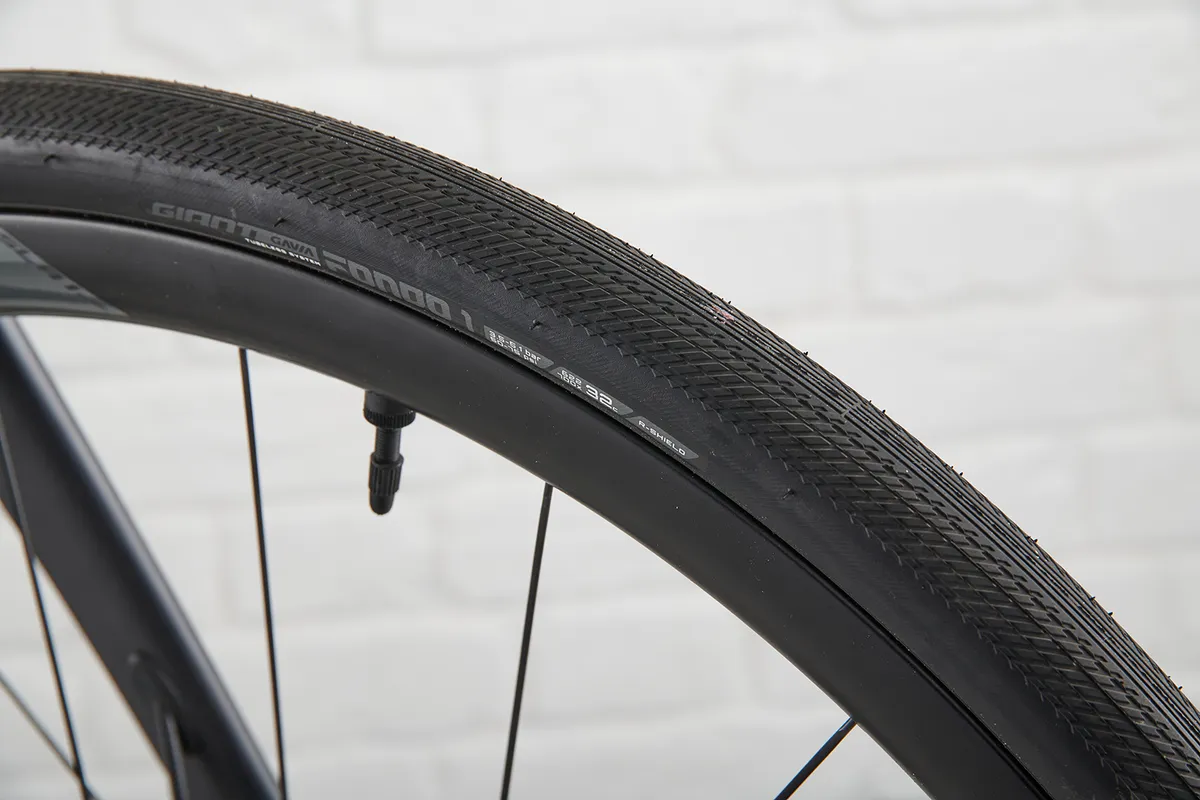
It’s at its absolute best flowing quickly through corners, pushing hard and exploiting the grip afforded by bigger volume tyres.
The Defy has always been a winner for me and Giant has smartly addressed the small concerns I had in the past with the disc rotors, while improving the specification from the previous year.
As such, the Defy Advanced Pro 2 is a stunning machine that packs in value, great looks and a wonderful ride. This new Defy is certainly one of the year’s highlights already.
Giant Defy Advanced Pro 2 geometry
- Seat angle: 73 degrees
- Head angle: 72.5 degrees
- Chainstay: 42cm
- Seat tube: 53.5cm
- Top tube: 57.5cm
- Head tube: 20.5cm
- Trail: 5.8cm
- Bottom bracket drop: 7cm
- Wheelbase: 1,025mm
- Stack: 60.5cm
- Reach: 39cm
Product
| Brand | Giant |
| Price | €3499.00, £3499.00, $3900.00 |
| Weight | 8.52kg |
Features
| Fork | Advanced-Grade Composite |
| Stem | Contact SL Stealth |
| Chain | KMC X11SL-1 |
| Frame | Advanced-Grade Composite |
| Tyres | Giant Gavia Fondo 1, tubeless, 700x32, folding |
| Brakes | Shimano Ultegra hydraulic with RT800 Ice Tech rotors |
| Cranks | Shimano Ultegra, 34/50 |
| Saddle | Contact SL |
| Wheels | Giant SLR-1 Disc tubeless-ready carbon |
| Shifter | Shimano Ultegra |
| Cassette | Shimano Ultegra, 11x34 |
| Seatpost | Giant D-Fuse SL, composite |
| Handlebar | Giant Contact SLR D-Fuse |
| Bottom bracket | Shimano, press fit |
| Available sizes | XS, S, M, ML, L, XL |
| Rear derailleur | Shimano Ultegra |
| Front derailleur | Shimano Ultegra |
